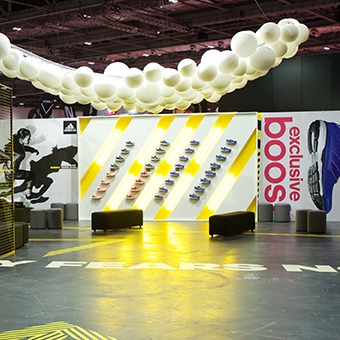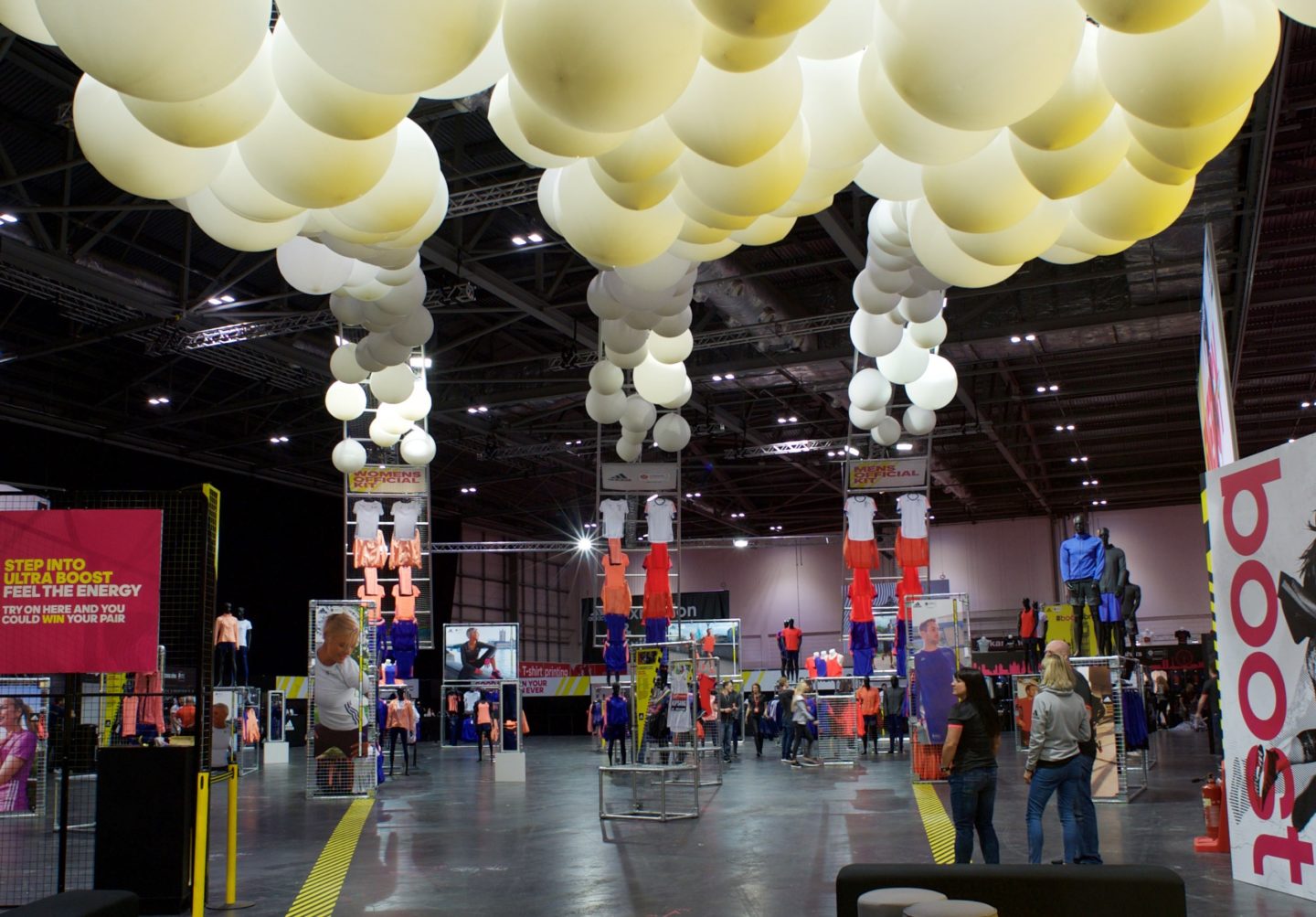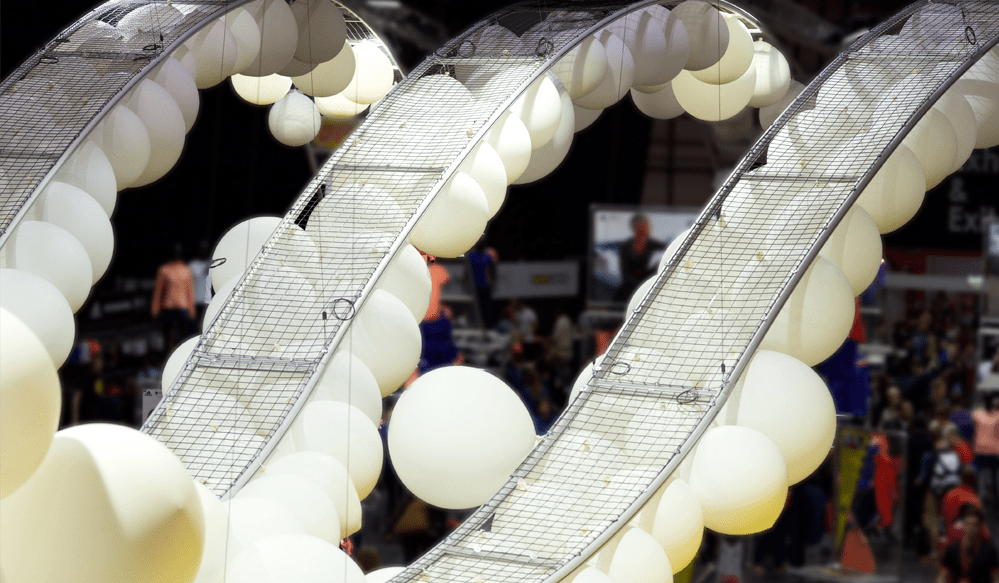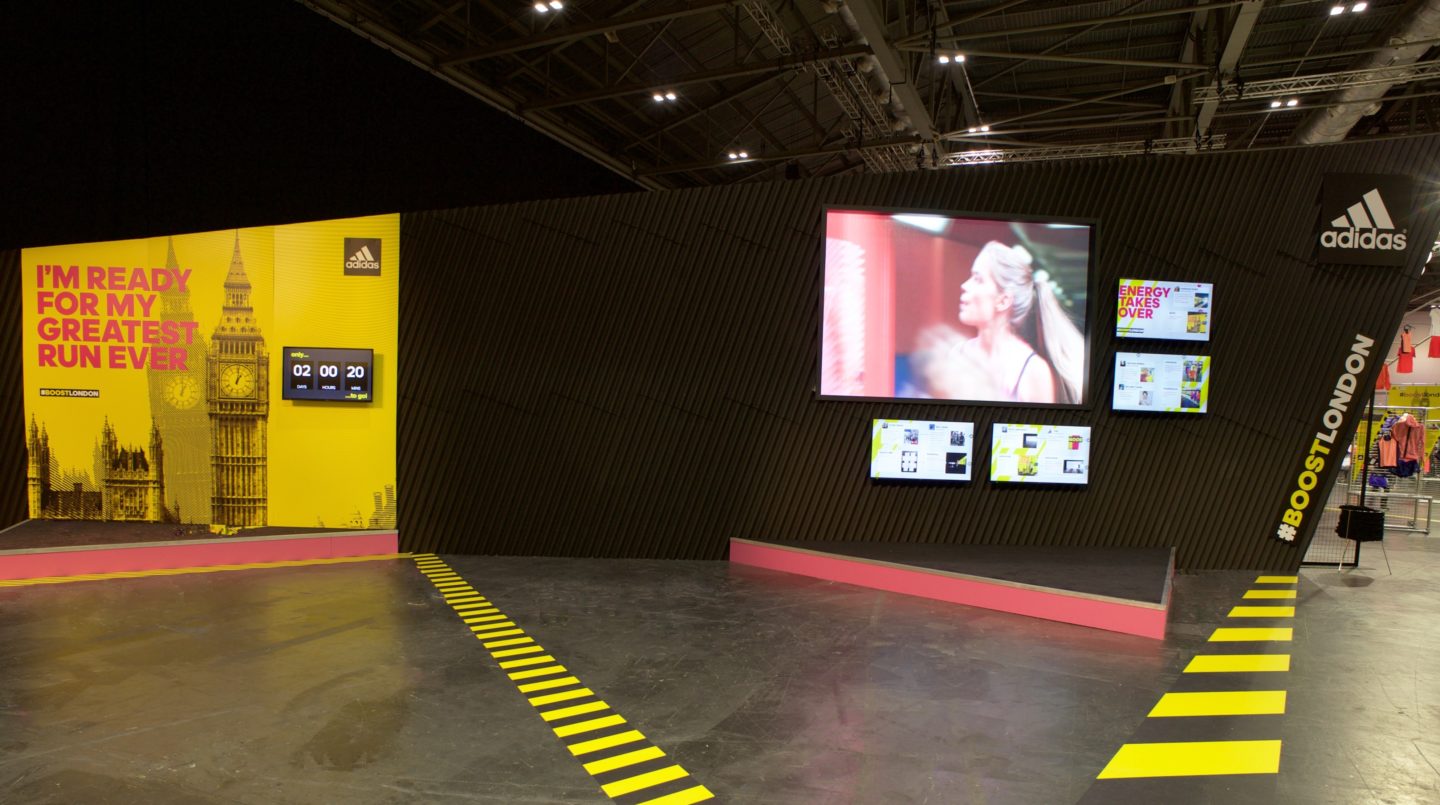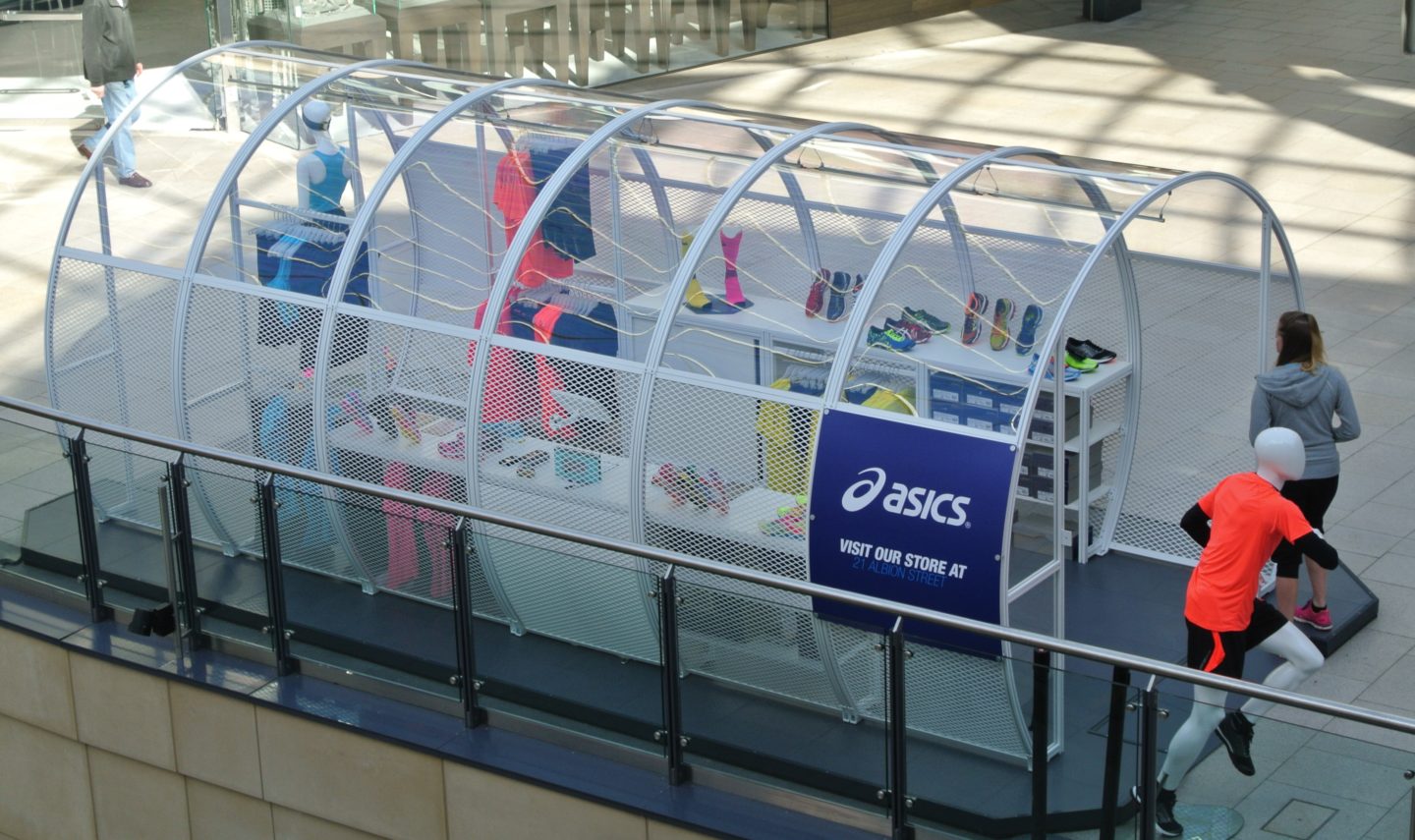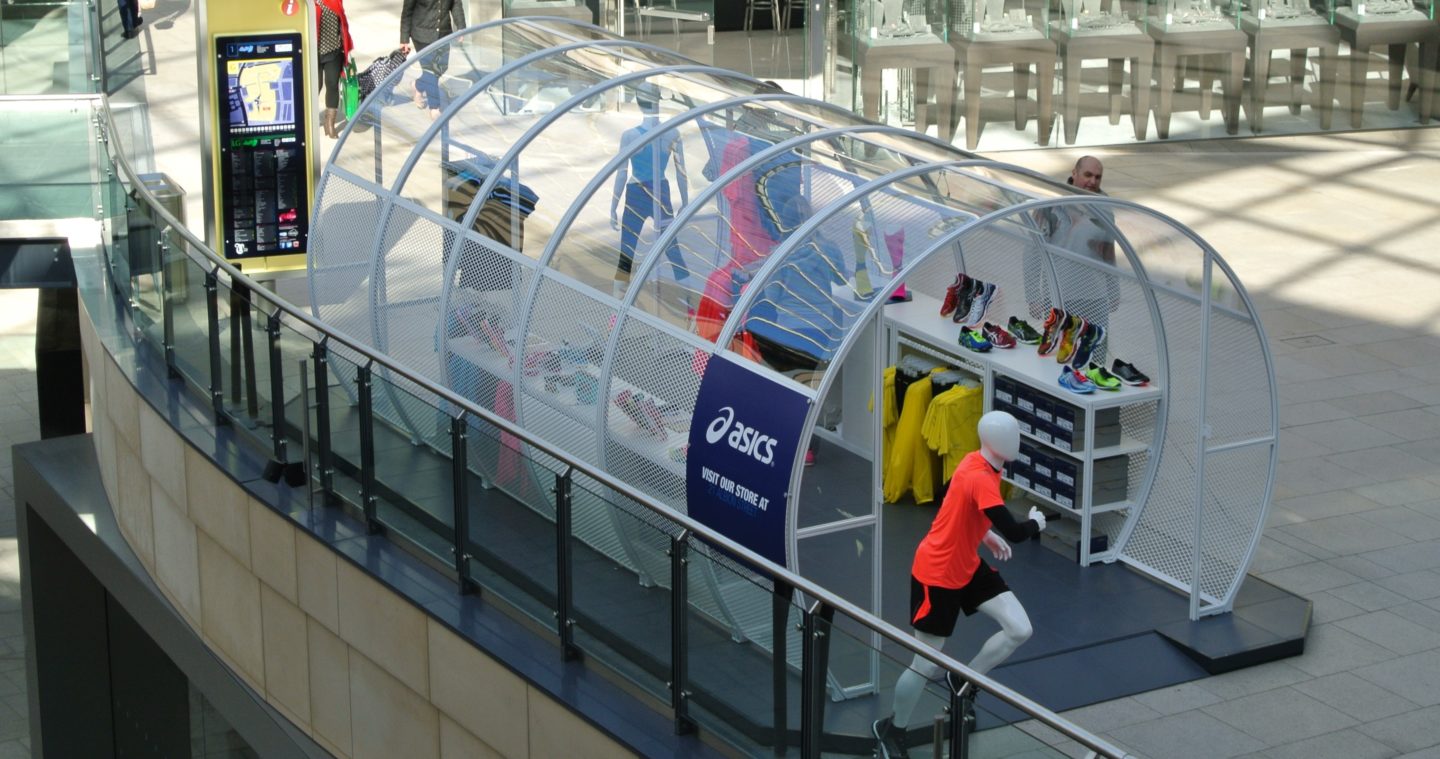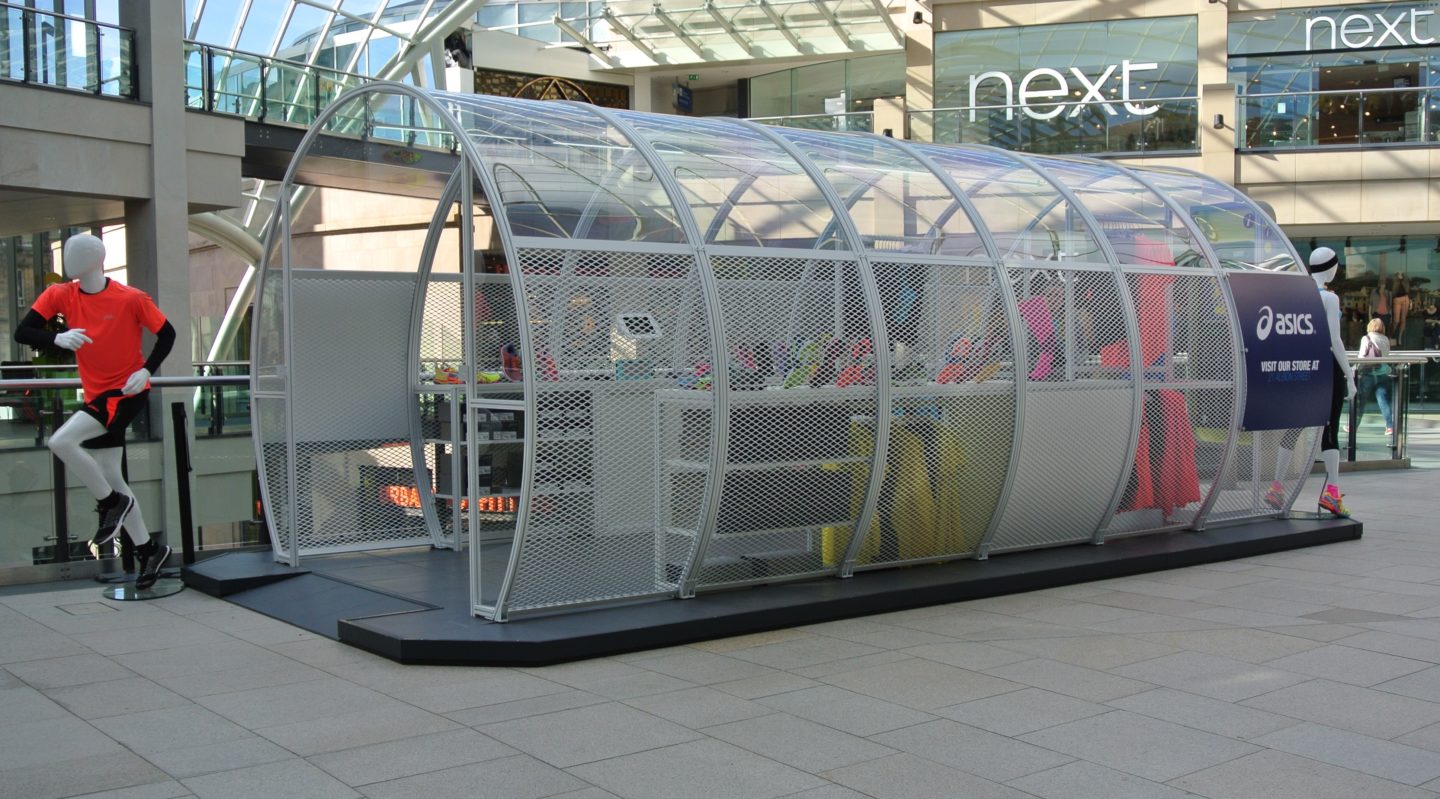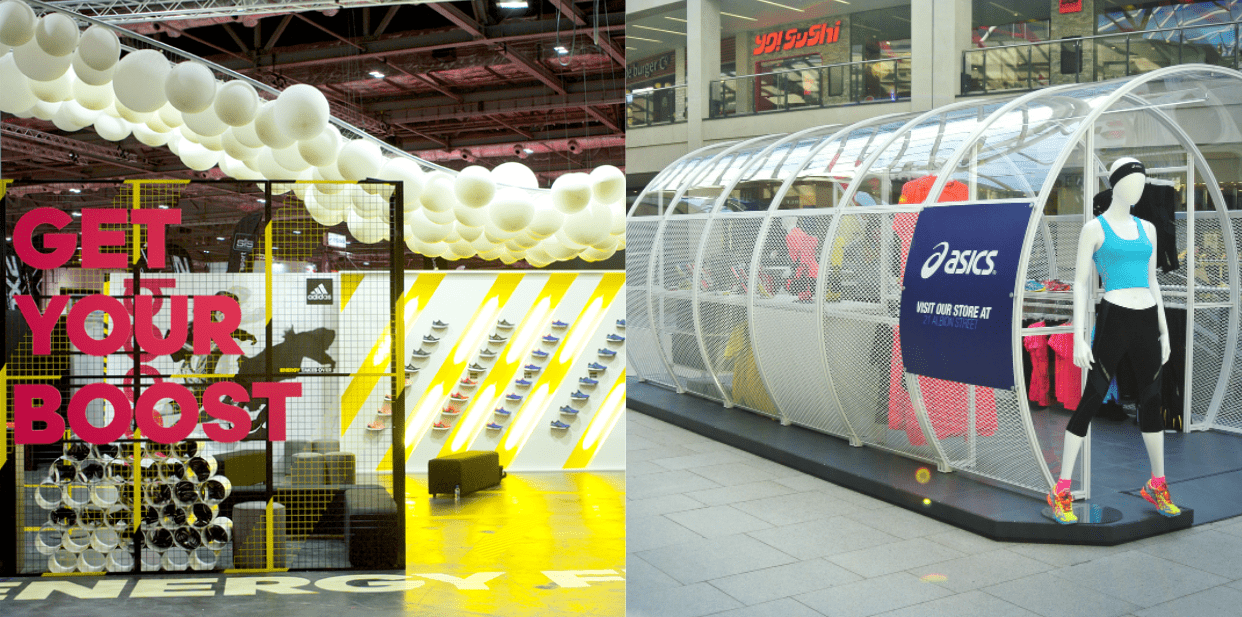
Adidas vs. Asics: Comparing Two Approaches to Brand Activations
Adidas and Asics are two of the world’s biggest, most well-known sportswear brands and both recognise the value of pop-up stores and event spaces for facilitating high-impact brand activations. In this blog post, we’ll take a look at the ways in which Adidas and Asics have used branded display spaces to promote key product ranges and reach specific target markets.
What is a brand activation?
Defined as an event, campaign, experience, or interaction through which a company drives customer actions and builds brand loyalty, brand activations aim to increase awareness about a particular service or product offering. They are one of the most effective, tried-and-tested ways in which retailers of all types can reach larger audiences and ensure that they are able to facilitate emotional connections with shoppers.
How does Adidas use brand activation strategies?
When seeking to engage with one of its key target markets – runners – at the London Marathon, Adidas knew it needed to pull out all the stops. To make a lasting impact in such a busy, high-energy environment, Adidas designed a striking display space that would be sure to capture the attention of the event’s participants and supporters.
A series of floor-standing display walls with custom printed graphics were situated below a visually striking wave-like structure that was suspended from the ceiling of the event hall, a juxtaposition that ensured both elements were all the more impactful.
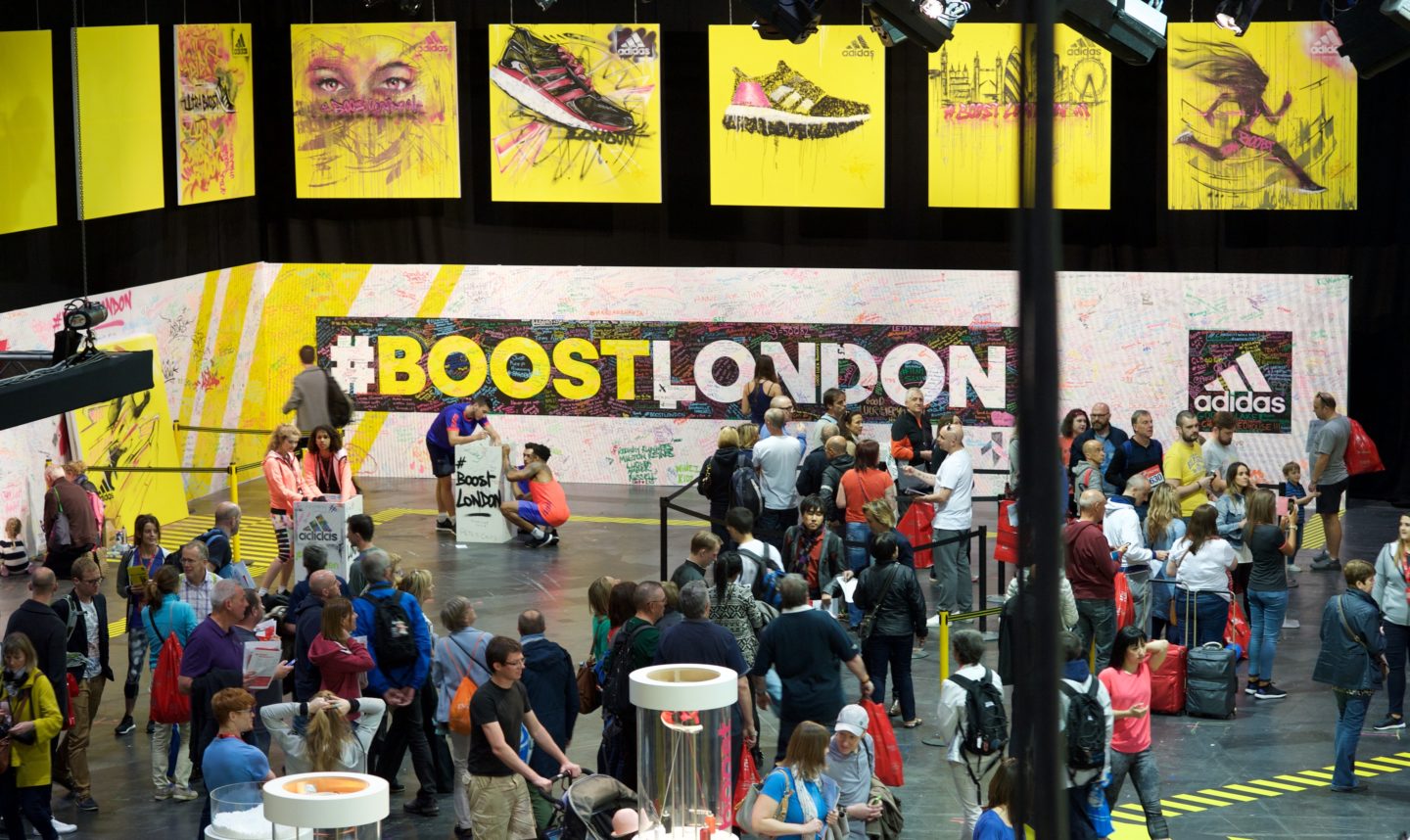
When moving around the brand activation space, runners and supporters could interact with Adidas’ latest product launches, hyper-relevant technologies and celebrated Originals range before receiving expert advice from the brand’s representatives. These interactions and experiences were facilitated by there being a number of distinct areas within the space, each dedicated to particular market niches.
The overall design of the brand activation space was inspired by the retro aesthetic of locker rooms, using mesh display cages and panels of block colour to punctuate the space and inject a sense of youthful energy.
The bespoke wave-like structure was formed from aluminium profiles and mesh panels to reflect the look and feel of the floor-standing displays. This feature was completely bespoke and succeeded in ensuring that Adidas remained highly visible throughout the packed exhibition hall.
How does Asics use brand activation strategies?
Asics embraced a different strategy for its brand activation space. By setting up a pop-up store on the main thoroughfare of a busy shopping centre, Asics used a tried and tested approach that enables brands to reach impressively large numbers of customers as they walk from store to store.
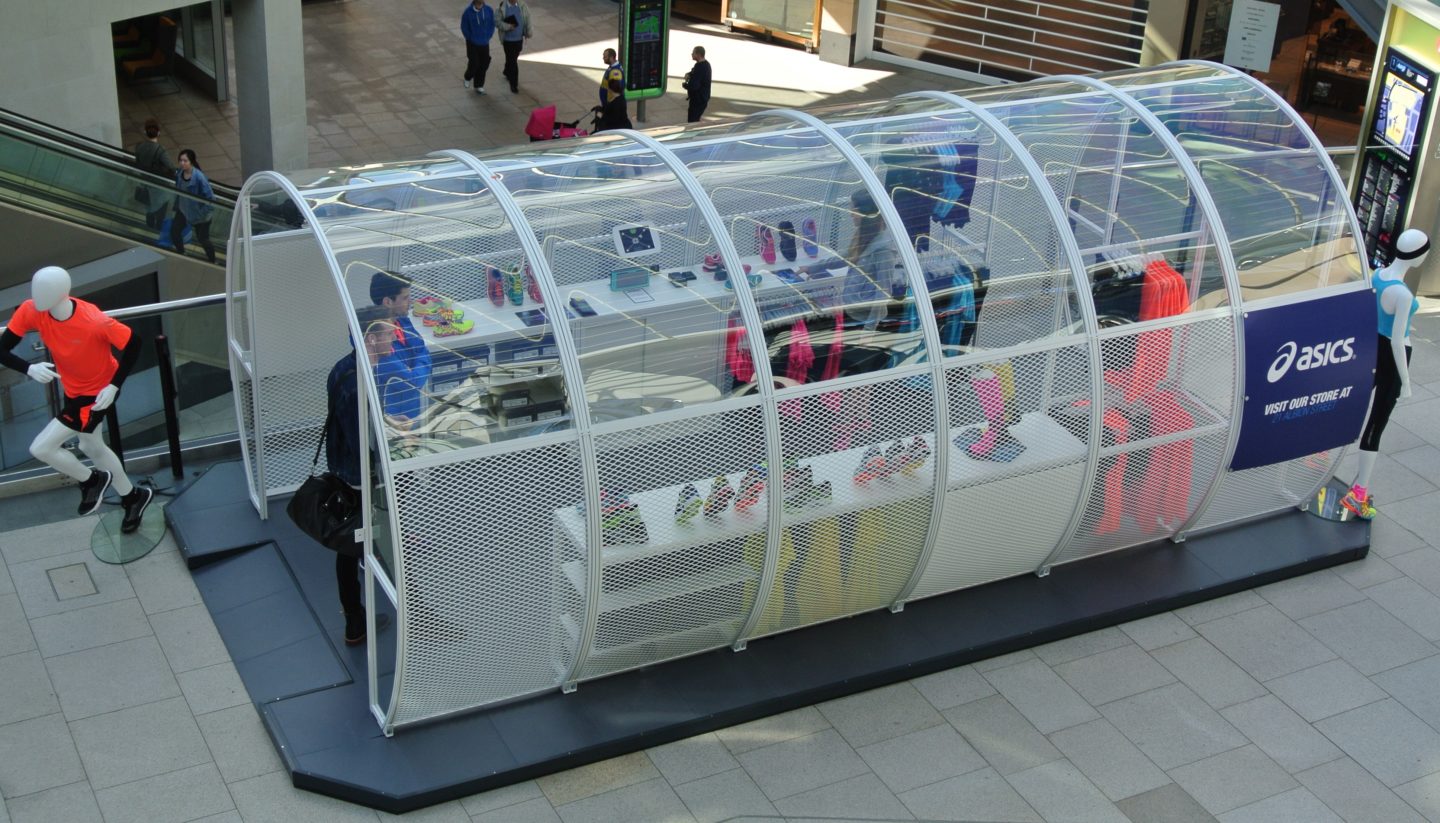
Much like Adidas, though, Asics made sure that the design of its pop-up store was unique so as to attract as much attention as possible. Moving away from traditional box-shaped or open-top spaces, Asics opted for a cylindrical structure made from aluminium profiles and perspex panels. The unusual curved shape of the pop-up was instantly eye-catching amid a landscape of straight, perpendicular lines and angles.
Knowing that its pop-up would need to be moved to different locations within the shopping centre, and potentially transported to different locations across the country, Asics chose a smaller structure for its brand activation. This, along with the inherent flexibility of its modular design, meant that the space could be disassembled quickly and easily before being reassembled in different locations depending on the brand’s campaigns.
Asics chose to integrate mesh panels into the outer framework of its brand activation space to provide a more lightweight, less visually obstructive alternative to solid walls. The gaps in the metal mesh allow light to pass through into the product display space inside, creating the illusion of the pop-up being larger than it actually is to ensure shoppers feel relaxed when interacting with the brand’s products and services.
Conclusions
Although very different in form and function, the brand activation spaces used by Adidas and Asics are both very effective. Whilst Adidas opted for a space that would deliver the ultimate wow factor at a one-off, high-profile event, Asics chose a smaller, more transportable structure that could be repurposed in different locations again and again.
When compared side by side, they both highlight that there are a lot of different options for brands looking to make meaningful connections with their target audiences. Different designs and functionalities can be customised to suit different environments, applications and occasions to ensure that brands are able to raise as much awareness as possible about a specific event, product range or campaign.

